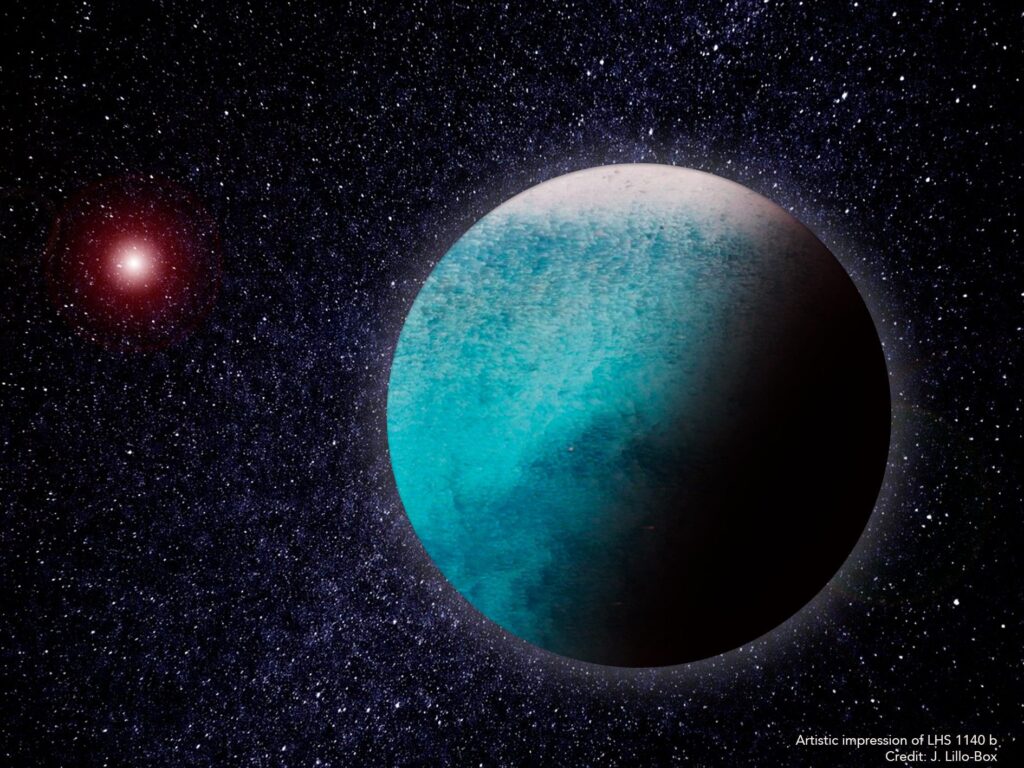An international team, which includes several researchers from the Institute of Astrophysics and Space Science (IA), studied the LHS 1140 system in detail and found that exoplanet “b”, located in the star's habitability zone, will have a large ocean of water. liquid.
Using data obtained by the "ESPRESSO" spectrograph and for the space mission TESS (NASA), a team of astronomers, which includes several researchers from the Institute of Astrophysics and Space Sciences (IA), studied the LHS 1140 system where two exoplanets were already known and concluded that the planet LHS 1140 b, which orbits in the zone of habitability of the star, it will be an aquatic world with a mass slightly greater than that of Earth.
The “ESPRESSO” (Echelle SPectrogaph for Rocky Exoplanet and Stable Spectroscopic Observations) is a high-resolution spectrograph installed at the VLT observatory (ESO). It was built with the aim of searching for and detecting Earth-like planets capable of supporting life. To this end, it can detect speed variations of around 0,3 km/h. It also aims to test the stability of the fundamental constants of the Universe.
The researcher at the IA and the University of Porto (UPorto), Sérgio Sousa comments: «This is another big step we have taken in our search for another Earth. ESPRESSO shows here its great ability to detect and characterize extremely interesting planets, which will certainly be targets of detailed studies with regard to habitability outside our solar system».
In addition to better characterizing planets "b" and "c", the study published in the journal Astronomy & Astrophysics, it also detected evidence of the presence of two more hitherto unknown exoplanets around the star LHS 1140. This is a red dwarf 41 light-years away, in the direction of the constellation of the Whale (Cetus), with about 5 billion of years (slightly older than the Sun) and with a surface temperature around 3000°C, just over half the temperature of the Sun.
Being less hot than the Sun, LHS 1140's habitability zone is closer to this and therefore, despite having an orbit of only 24,7 days, planet "b" orbits within this zone, where Earth-like planets they are at the right distance from the star so that they can have liquid water on their surface.
Data from the space mission TESS and ESPRESSO, installed at the Paranal Observatory (ESO), allowed the team to obtain very precise values for the masses and diameters of the already known planets: Planet “b” is 1,7 times the diameter and 6,5 times the mass of Earth, while planet “c” is 1,3 times the diameter and 1,8 times the mass of Earth. With these data, they were able to calculate the density of these planets and characterize their internal composition. In the case of LHS 1140 b, calculations point to the planet being terrestrial type and with the surface covered by liquid water.
According to João Faria (IA & Dep. of Physics and Astronomy, Faculty of Sciences, University of Porto), «on the planet LHS 1140 b, which is in the star's habitability zone, there is a high probability of liquid water on the surface, which makes it one of the best targets for future biomarker research».
The great accuracy of ESPRESSO also gave researchers clues to the existence of another potential planet in this system, LHS 1140 d, with 4,8 times the mass of Earth and an orbital period of about 79 days. This planet orbits slightly outside the star's zone of habitability and will have an internal composition at the boundary between the rocky and gaseous planets. There is still evidence of a fourth planet, which may share an orbit with planet “c”, but further studies are needed to confirm this exotic scenario.
The participation of the AI in ESPRESSO is part of a broader strategy to promote research on exoplanets in Portugal, through the construction, development and scientific definition of various instruments and space missions, such as the CHEOPS (ESA) mission, already in orbit. This strategy will continue for years to come, with the launch of the PLATO space telescope (ESA) and the installation of the HIRES spectrograph on the largest next-generation telescope, the ELT (ESO).
The article “The LHS 1140 planetary system revisited by ESPRESSO and TESS”, was published in the journal Astronomy & Astrophysics.
Institute of Astrophysics and Space Science
Science in the Regional Press – Ciência Viva



















Comments